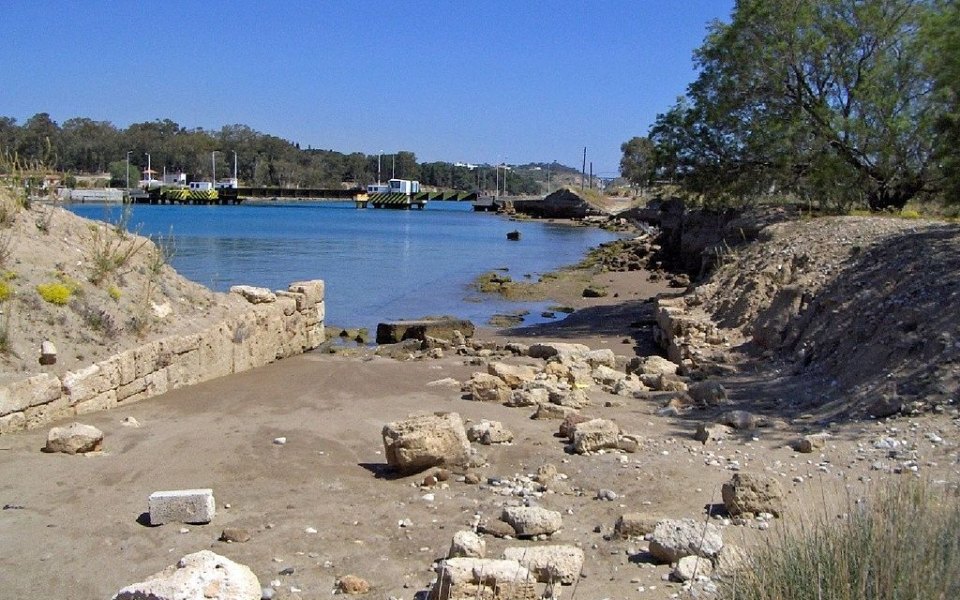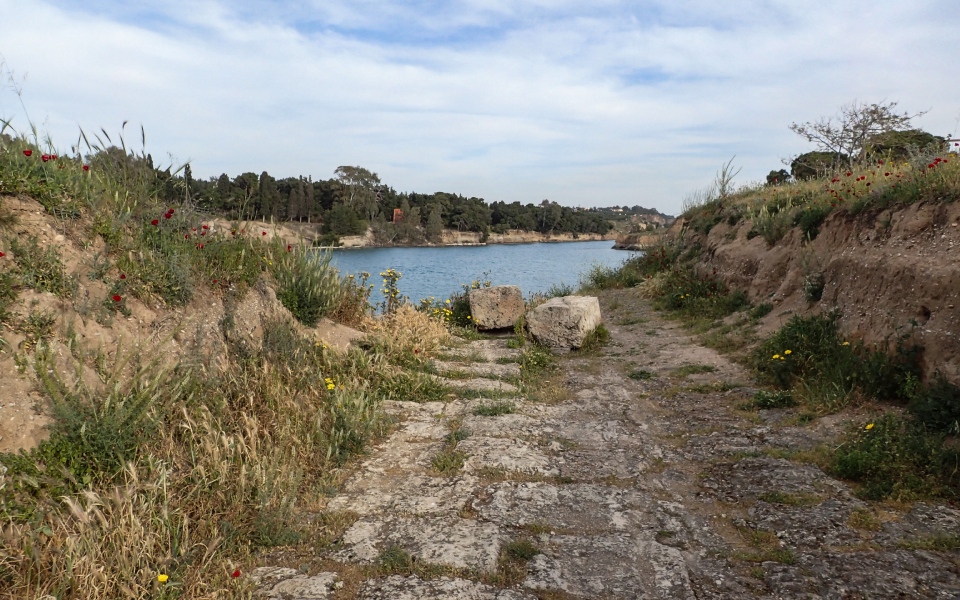One of ancient Greece’s most ambitious engineering projects, the Diolkos, a cobbled limestone trackway on which ships were transported overland across the Isthmus of Corinth, is about to undergo extensive restoration works by the Greek Ministry of Culture and Sports.
In a recent announcement, the Central Archaeological Committee has given unanimous approval of the preliminary studies for the conservation and enhancement of the 6 to 8.5 kilometer-long trackway that connects the Corinthian Gulf to the Saronic Gulf.
Built at the end of the 7th to the beginning of the 6th century BC, during the reign of the tyrant Periander at Corinth (627-585 BC), the “Diolkos” saved vessels from the long and hazardous circumnavigation of the Peloponnese peninsula, notorious for strong winds and gales. A compound of the Greek words dia (meaning “across”) and holkos (“portage machine”), the ancient trackway – an early form of railway – provided a safe shortcut for the transfer of trade goods and cargo between the Ionian Sea and the Aegean Sea, as well as the rapid deployment of warships during naval campaigns.
“The Diolkos is a technological marvel of the pre-Classical era, the first systematic attempt to transport goods and warships from the Saronic Gulf to the Corinthian Gulf, and vice versa,” said Minister of Culture Lina Mendoni.
“The project, which is being prepared by the competent services of the Ministry of Culture in collaboration with the Peloponnese Region, is evolving in parallel with the technical and security projects that are currently being carried out in the Corinthian Canal,” she added.

The close proximity of the modern Corinth Canal, constructed in the late 19th century, has caused extensive damage to the Diolkos over the years. Strong underwater currents caused by the constant passage of large ships along the 6.4 kilometer-long canal has led to the erosion and near total collapse of some sections of the ancient trackway.
The restoration project, carried out in close collaboration with the Ephorate of Antiquities of Corinth and the Prefecture of Corinth, envisages the ancient Diolkos and its immediate environs as a single monument. The Ministry is planning to develop it into a modern archaeological site open to visitors, including seating areas, information signs, and a walking route to the ancient jetty, where awaiting ships would moor prior to being hauled into position.
To date, extensive documentation, including architectural and geotechnical studies of the trackway’s surviving sections have been carried out by members of the Culture Ministry. The next stage will include backfilling, further excavation, and the maintenance and possible repositioning of sunken parts of the ancient structure.
“As fast as a Corinthian”
Remains of the ancient Diolkos were first identified in 1883 by the German archaeologist Habbo Gerhard Lolling, while parts of the western quay, on the side of the Corinthian Gulf, were discovered in 1932.
Systematic excavations of the monument were carried out by Greek archaeologist Nikolaos Verdelis between 1956 and 1962, uncovering a continuous section of 800 meters at the trackway’s western end. Today, only 1,100 meters of its original 8-kilometer course is visible. The route to the eastern end, approaching the Saronic Gulf, has not yet been located.
The ancient Diolkos remained in regular operation until at least the middle of the 1st century AD, after which it was most likely put out of use by abortive attempts by the Romans to cut a canal through the Isthmus.
Paved with hard limestone cobbles, the trackway was 3.4 to 6 meters wide, with parallel grooves about 1.6 meters apart. These grooves indicate the use of a large wheeled vehicle that carried the ships from one side to the other, pulled by men, draught animals, and a system of ropes, pulleys and capstans (rotating machines for increasing pulling power).
The effective use of the Diolkos in antiquity prompted 5th century BC comic playwright Aristophanes to coin the phrase “as fast as a Corinthian,” indicating the engineering marvel was successful at quickly (and safely) transporting goods between the Ionian Sea and the Aegean Sea.












